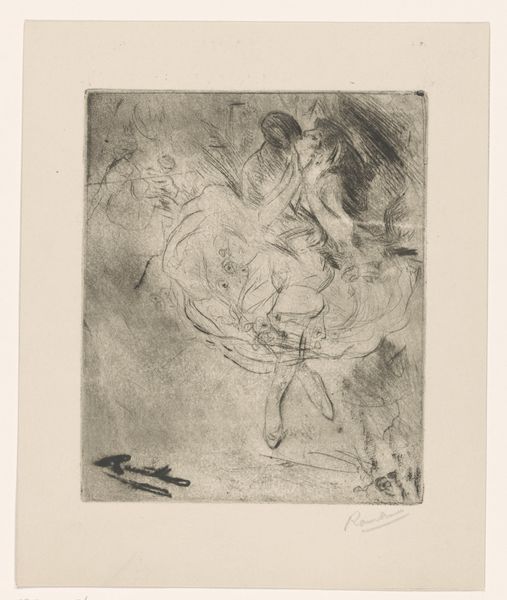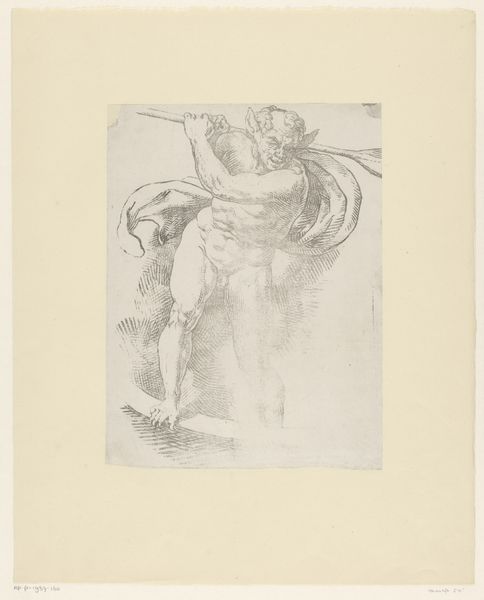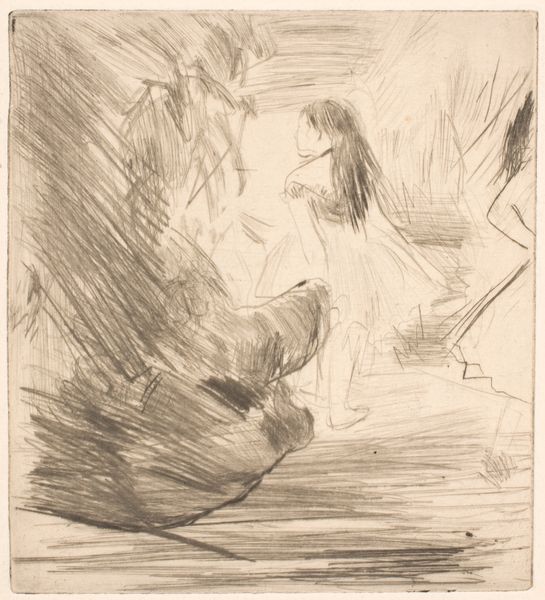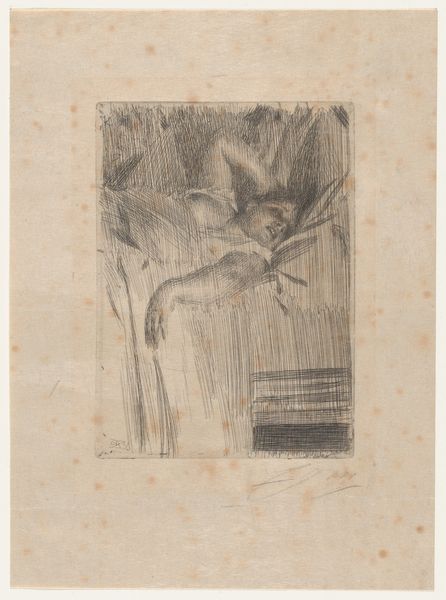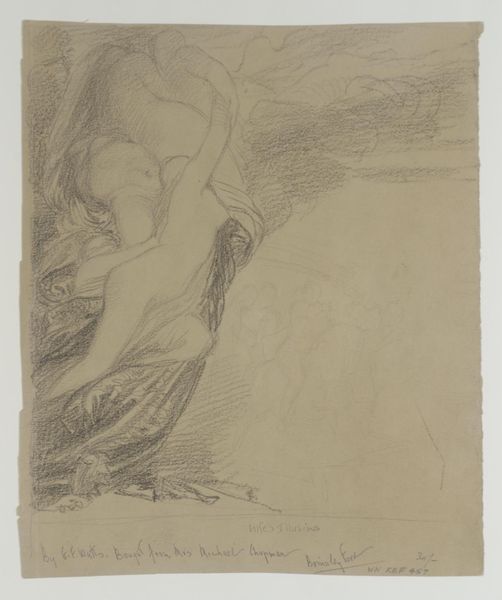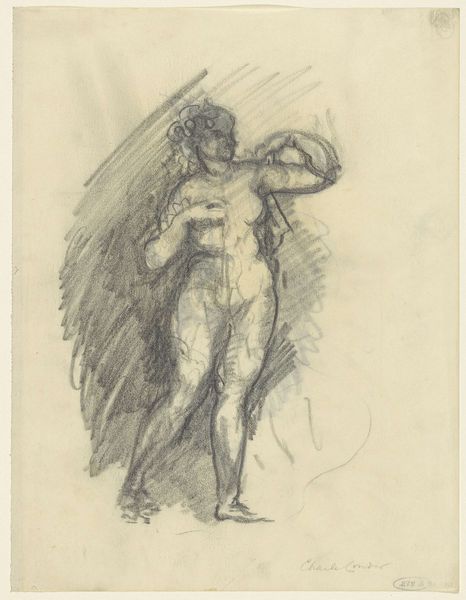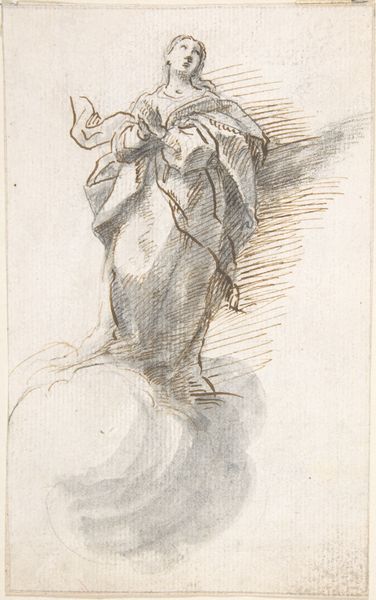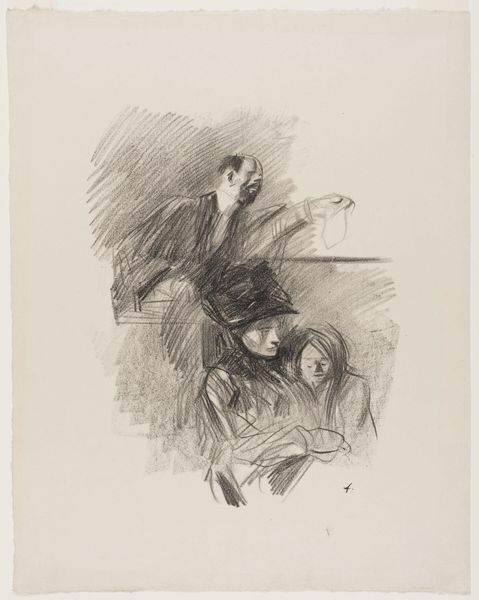
Dimensions: height 225 mm, width 155 mm
Copyright: Rijks Museum: Open Domain
Curator: The immediate impression I get from this work is a feeling of delicate movement, almost like a fleeting dream. It’s a pencil sketch of a dancer, titled "Studie van een danseres die bloemen strooit", or "Study of a dancer scattering flowers", created by Henri Fantin-Latour around 1903-1904. Editor: Indeed. Fantin-Latour often engaged with themes of performance and the female form, but it’s essential to consider the cultural moment. How were women represented in ballet and performance, and who had access to those spaces? There's an underlying discourse here about class and visibility, right? Curator: Absolutely. Fantin-Latour himself existed within fairly rigid structures in the art world. He's depicting a fleeting moment, yet doing so with an artistic pedigree. Editor: I wonder if Fantin-Latour recognized this. The lack of precise detail obscures any true representation. Her form and act of performance become less individual and more representational, like any idealised allegory of womanhood from this time period. The gesture is quite demure. Curator: Perhaps this ties back to Impressionism? It prioritized the suggestion of movement over precise representation of reality. His handling of line is so suggestive, creating the illusion of movement. Editor: And, from a gendered perspective, her body almost vanishes. Is she performing for the male gaze? Curator: Possibly, or perhaps a statement against the stiff formality of Academic art. These sketches granted him a freedom he lacked when dealing with paintings that needed patrons and gallery acceptance. Editor: I suppose both can be true. Fantin-Latour's work shows a real insight into the gender performance of a cultural moment even if unintentional, framed and constrained within his socio-political circumstances. The sketch format is inherently rebellious to some extent. Curator: In viewing art, it's useful to analyze from all the possible lenses that may show the social history or intent from each era. Editor: Definitely. Every line in art serves as a sign of their society and our own perspectives today.
Comments
No comments
Be the first to comment and join the conversation on the ultimate creative platform.
